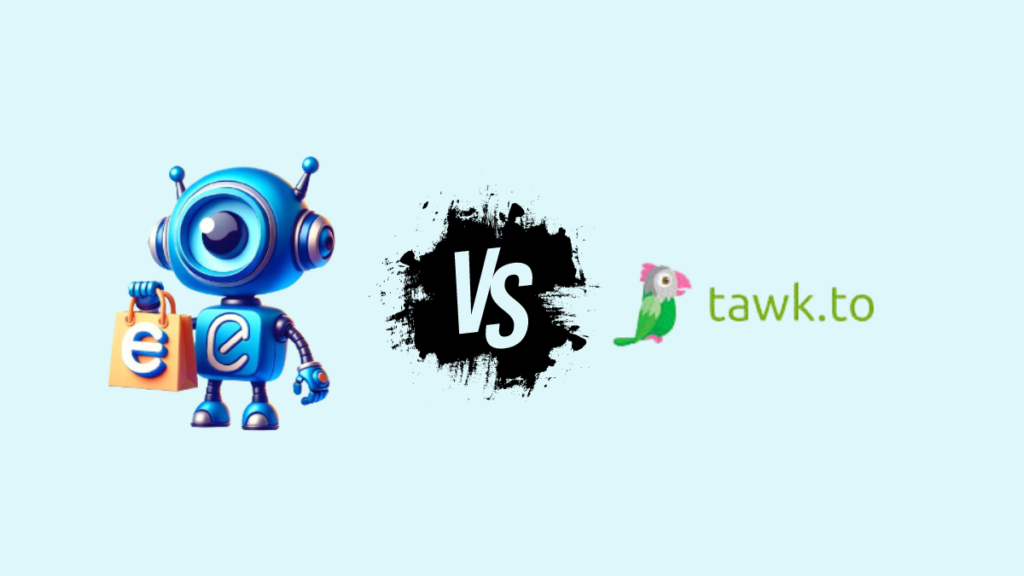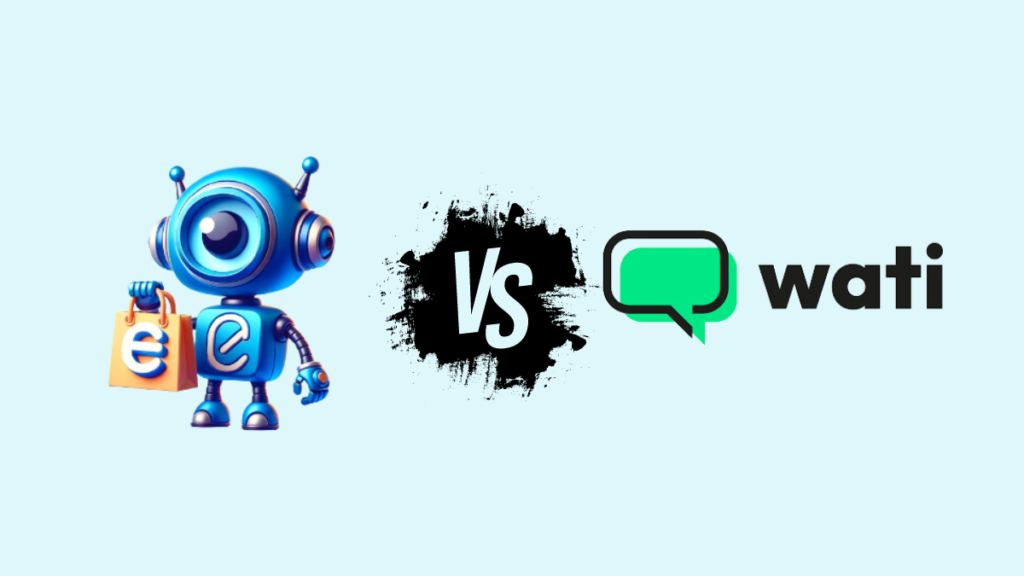When starting your e-commerce business, choosing a platform that works best for you is crucial.
There are hundreds of e-commerce marketplaces, but this guide will focus on the two giant and most popular platforms.
Shopify or Amazon FBA?
This is a widespread dilemma for all aspiring entrepreneurs, but not anymore.
By reading the last word of this article, you’ll be ready to decide which is right for your business.
Shopify powers over 1,000,000 businesses, and Amazon receives 2.5 billion visitors monthly.
This is what makes both platforms reliable. However, you need to understand how they work, their pros and cons, and their key differences. Let’s dive in!
Table of Contents
What is dropshipping?
It’s essential, especially for beginners, to understand dropshipping. Dropshipping is a retail business where online store owners don’t keep the products they sell in stock.
You handle the marketing and customer service, while the supplier takes care of warehousing and shipping the products. It allows you to start an online store with minimal upfront costs since you don’t need to invest in inventory.
What is Shopify dropshipping?
Shopify is a leading e-commerce platform that allows merchants to create and run online stores. Shopify dropshipping is a business model where you use Shopify’s platform to build your online store, but you don’t need to stock any products yourself.
So, you’re a matchmaker for products and customers. The supplier then handles everything from keeping the product in stock to packaging and shipping it to your customer.
Conversely, you focus on marketing your store, providing excellent customer service, and processing orders.
Shopify dropshipping allows you to launch your online business with minimal upfront costs. However, to be successful, you’ll need to be strategic. Careful planning, eye-catching marketing, and competitive pricing are critical ingredients for a thriving dropshipping business on Shopify.
How it works:
- List products in your Shopify store with descriptions and prices.
- You’ll get notified when a customer places an order.
- Contact and forward the order to the vendor.
- Get billed and purchase the products at the supplier’s wholesale price.
- The supplier packages and ships the orders to the customers directly.
Pros for Shopify dropshipping
- Low start-up costs, as you don’t need much money to start
- There’s no overhead or operational complexity; you don’t have to hold any physical inventory.
- You can add as many products as possible to your store without worrying about inventory limitations.
- You can access your customers’ data, allowing you to continue marketing products to the same customers.
- You can run your business anywhere and anytime with a stable internet connection.
Cons:
- Making a profit can be tricky. Since competition is fierce, you should keep your prices low, which can result in smaller profit margins.
- You trust someone else’s hustle. Your supplier determines your product quality, packaging, and shipping times.
- If your supplier runs out of something or experiences delays, it can reflect poorly on your business. Stockouts can frustrate customers and lead to lost sales.
- Shipping costs can go up, especially when sourcing products from multiple suppliers.
What is Amazon FBA?
Amazon FBA, also known as Fulfillment by Amazon (FBA), is a service offered by Amazon that takes the heavy lifting off your shoulders. Instead of keeping your inventory at home or renting a warehouse, you send your products to Amazon’s warehouses.
When customers place an order, they pick up the product, pack it neatly, and ship it directly to the buyer. They also handle returns and customer service inquiries.
With the help of Amazon FBA, you’ll have some free time to focus on finding excellent products to sell and grow your business.
Additionally, your customers will enjoy faster delivery times and access to benefits like Prime shipping, which can be a huge selling point.
How it works:
- Set up an Amazon selling account and log in to Seller Central to create an FBA.
- Create product listings and prepare products for safe transportation to the fulfillment center.
- Send your items to Amazon’s fulfillment centers.
- Amazon stores the items safely as they await customers to order them.
- Once there’s an order, Amazon fulfills it on your behalf.
- Amazon handles any questions or concerns about your products and manages returns.
Pros for Amazon FBA
- An immediate customer base translates to a ready-made audience for your products.
- FBA handles all your products’ storage, picking, packing, and shipping, freeing you up to focus on the bigger picture.
- The time you save on fulfillment can be reinvested in growing your business. Focus on finding new products, marketing your store, and building your brand.
- Amazon’s FBA offers your customers much faster shipping times.
- FBA gives you access to benefits like Prime shipping, a significant selling point for many online shoppers.
- Customers will trust your products more when they see the Prime badge.
- You can sell products at better profits on Amazon.
Cons:
- Amazon FBA tags along fees, which can be costly, including referral fees (depending on the category), shipping fees, advertising, storage, etc.
- No access to customer data
- You may be unable to send as many products as you wish due to Amazon’s restock limit.
Dropshipping on Shopify vs. Amazon FBA: How do they compare?
Ease of Use
Shopify is known for being super easy to use, especially for people new to the e-commerce game. Setting up your store is a walk in the park, with pre-made templates and themes you can customize to match your vision.
Plus, their dashboard is nice and clean, making it easy to find what you need. You can use their drag-and-drop editor to personalize your store layout in a snap and manage things like orders, inventory, and products all from one place.
Conversely, Amazon has millions of shoppers waiting, a plus for online sellers. However, starting on Amazon can be more involved than on Shopify.
You need to take a few extra steps before signing up, and they require more detailed information. With lots of data displayed, the dashboard can also initially seem overwhelming.
So, if you’re a beginner, Amazon might take a little longer to learn.
Additionally, Amazon’s competition can be intense. Since multiple sellers often offer similar products, you’ll need to sharpen your skills in optimizing your listings, pricing, and fulfillment to grab shoppers’ attention.
Shopify takes the lead in terms of ease of use and customization options. Amazon provides a massive global marketplace, but you should expect stiff competition.
Features
Shopify has many features that make building and managing your online store easy. These features include:
- Drag-and-drop editor: No coding skills are needed to use this feature. Shopify’s drag-and-drop editor lets you create beautiful and unique landing pages, allowing your brand to stand out. You can also personalize your storefront with over 140 free and paid themes.
- Shopify’s app store is rich in e-commerce tools. With over 450 apps designed explicitly for drop shippers, you’ll find tools for everything from managing products and inventory to tracking orders. Shopify integrates seamlessly with social media and other platforms, helping you reach a wider audience.
- Provides integration with various apps and platforms: Shopify allows you to reach out to a broader audience with its integration with social media channels, applications, and other platforms.
Amazon might be your perfect match if you want to hit the ground running with a massive customer base. Its features include:
- Broad customer base: Amazon boasts a huge online marketplace with millions of potential customers waiting to purchase your products. This is a significant advantage if you’re new to the game and want to skip building brand awareness from scratch.
- FBA Fulfillment: Amazon’s FBA service covers everything from warehousing and order fulfillment to shipping and customer service. You can focus on growing your business while Amazon handles the logistics.
- Ability to offer prime shipping to customers: Customers want a faster shipping and delivery platform. Using FBA, you can offer Prime shipping to your customers, boosting conversion rates and building customer loyalty.
- Wide range of tools: Amazon offers a variety of tools to help you automate, plan, scale, and outsource to ensure your business is running smoothly.
- Wide product selection: Amazon offers a vast selection of products you can sell. Their search function lets you quickly find items based on keywords, categories, or specific criteria. This helps you identify products with strong demand and less competition. Once you’ve found the perfect products, Amazon gives you the tools to craft detailed descriptions, upload high-resolution images, and set competitive pricing.
Autonomy
On Shopify, as long as you pay your monthly fees, your store is yours to command. You have complete control over everything, from the design and layout to the products you sell and the apps you integrate. This allows you to build a unique online experience that reflects your brand and vision.
With Amazon, things function a bit differently. Since you’re selling on their established marketplace, you have a different level of autonomy.
You won’t be building your website or customizing the look and feel to your liking. However, you do have control over your product listings, descriptions, and pricing.
Here, Shopify wins. You have autonomy since you own your store.
Consumer Trust
If we talk of brand recognition, Amazon is the undisputed heavyweight. Founded in 1994, it’s a household name for millions of online shoppers.
Most people you ask on the street will likely be familiar with Amazon, giving them a built-in trust advantage. Plus, Amazon showcases customer reviews and comments on every product page, allowing potential buyers to see honest feedback before they purchase.
Shopify, on the other hand, is a bit younger. While it’s become a popular choice for e-commerce businesses, it might not be as instantly recognizable to the average consumer. However, Shopify has earned users’ trust who are explicitly looking for website builders and e-commerce platforms.
Shipping Options
Shipping is crucial in dropshipping, and Shopify lets you integrate with various third-party fulfillment services, including the popular Amazon FBA. This gives you flexibility in choosing the best fit for your needs.
Shopify also has partnerships with major shipping carriers like USPS, UPS, and DHL, which can offer you discounted shipping rates. You can compare rates, print shipping labels, and track packages all from your convenient Shopify dashboard.
Amazon offers two shipping options: self-fulfillment and fulfillment by Amazon (FBA). Since you’re dropshipping, FBA is the way to go.
You can tap into Amazon’s impressive logistics network by storing your products in its vast fulfillment centers, which translates to faster and more efficient customer order processing.
FBA also allows you to offer attractive benefits like Prime shipping. However, remember that FBA charges fees for picking, packing, and shipping each item. These costs depend on the size and weight of your products.
Here, the best shipping option depends on the specific shipping needs of your business. While Shopify has vast and more flexible shipping options, Amazon FBA offers fast and efficient order processing.
Customer support
While Amazon offers sellers customer support, it’s different from front and center. Their focus is on self-service options.
Their website prioritizes directing you to helpful resources like articles, community forums, and video tutorials to troubleshoot problems independently.
If you need to speak with someone directly, you can request a callback, but finding the contact information can be a scavenger hunt.
Shopify, on the other hand, proudly wears its customer support badge. Contacting their support team is a breeze; they offer live chat, email, and phone support, all readily available within your Shopify dashboard.
Plus, they have extensive support for webpages in 21 languages. So, no matter what time zone you’re in or the language you speak, help is just a click or call away.
Payment Methods
Making payments at Shopify is more flexible. The platform allows a variety of payment methods, including Shopify payments, PayPal, Stripe, Apple Pay, Google Pay, Klarna, and Amazon Pay.
On the other hand, Amazon allows credit and debit cards as the main payment options. Amazon payment methods include credit and debit cards, Amazon Store Cards, Amazon Gift Cards, Amazon Cash, and Amazon Pay.
Pricing
Shopify offers tiered pricing plans, with each level giving you more features as you go:
- Shopify Basic ($32/month): Perfect for beginners, this plan lets you list unlimited products, have two staff accounts, and build a website and blog. Plus, it integrates with tons of helpful apps.
- Shopify Regular ($92/month): Ideal for growing businesses, this plan includes everything in Basic Shopify, with the bonus of creating up to five staff accounts, generating advanced reports, and getting real-time shipping rates.
- Shopify Advanced ($399/month): Designed for high-volume businesses, this plan offers all the features of the previous plans, along with advanced reporting, real-time shipping details (including duties and import taxes), and the ability to create up to 15 staff accounts.
- Shopify Plus (custom pricing): For large-scale businesses, Shopify Plus offers a custom pricing plan that includes everything in the standard Shopify plans, plus features specifically designed for handling high-volume sales.

Amazon’s pricing is more complex. Here’s the breakdown:
- Individual Selling Plan ($0.99 per item sold): This option suits casual sellers, but you’ll pay a per-item fee for each product you sell.
- Professional Selling Plan ($39.99 per month): Ideal for sellers with higher sales volume, this plan comes with a monthly fee but eliminates the per-item fee.
In addition to the base fees, Amazon charges referral fees for each product sold, which vary depending on the product category. There are additional fulfillment fees if you use Amazon’s FBA service, which covers storage, order handling, picking, and packing.
Start shopify Free Trial Today


In conclusion, Shopify offers a transparent pricing structure with fixed monthly fees, making it easy to budget. Amazon’s fees vary depending on your sales volume and product categories.
Shopify might be a better fit if you prefer a predictable monthly cost. Amazon’s selling plan could be an excellent place to start if you’re a casual seller with a low sales volume.
Read Also:
- Zendesk Alternative: Why Choose Ecommercebot
- Engati Alternative: Why Ecommercebot Tops The List
- How Do I Find A Supplier For My Dropshipping?
- 10 Best WordPress Chatbot Plugins For Your Website
- How To Create Instagram Posts With AI
Dropshipping on Shopify vs. Amazon FBA: In a Nutshell
Shopify and Amazon are powerhouses for e-commerce entrepreneurs but meet different needs.
Shopify is ideal if you want complete control over your online presence.
You can build a beautiful and unique website that reflects your brand. This is perfect for selling exclusive products or establishing a long-term brand identity.
Shopify is user-friendly and offers a variety of features to help you manage your store and grow your business.
Things are even better with its integration with the e-commerce bot via the Shopifybot. You’ll be able to effortlessly create ads, personalize live chats, manage content on social media channels, and track inventory in real time.
You can try Ecommercebot for free; no credit card is required. You agree to turn your E-commerce business into a success story by clicking the image below.

Amazon is all about speed and reach. Getting started is a breeze; create an account, and you’re ready to sell a wide range of products, new or used.
This low barrier to entry makes it attractive for beginners.
However, you will have a different control over branding and the customer experience than with Shopify.
The best platform depends on your goals. Shopify might be the way to go if you prioritize building a unique brand and long-term customer loyalty.
But if you’re eager to tap into a massive existing customer base and get started quickly, Amazon could be a great option.
Frequently Asked Questions (FAQs)
What’s the critical difference between Shopify and Amazon?
The main difference between Amazon and Shopify is that Amazon is an existing online marketplace where you can list your products for sale. On the other hand, Shopify allows you to build your store to list your items.
Is dropshipping allowed on Amazon FBA?
You can dropship on Amazon FBA if your business meets their criteria. You must identify yourself as the owner of the products on all invoices, packing slips, and packages. It is also your responsibility to accept and process your products’ returns.
Can I sell on both Amazon and Shopify?
Yes, you can sell on both platforms. This can be your dream solution for your online store. You can integrate the two platforms and get the most out of both.

